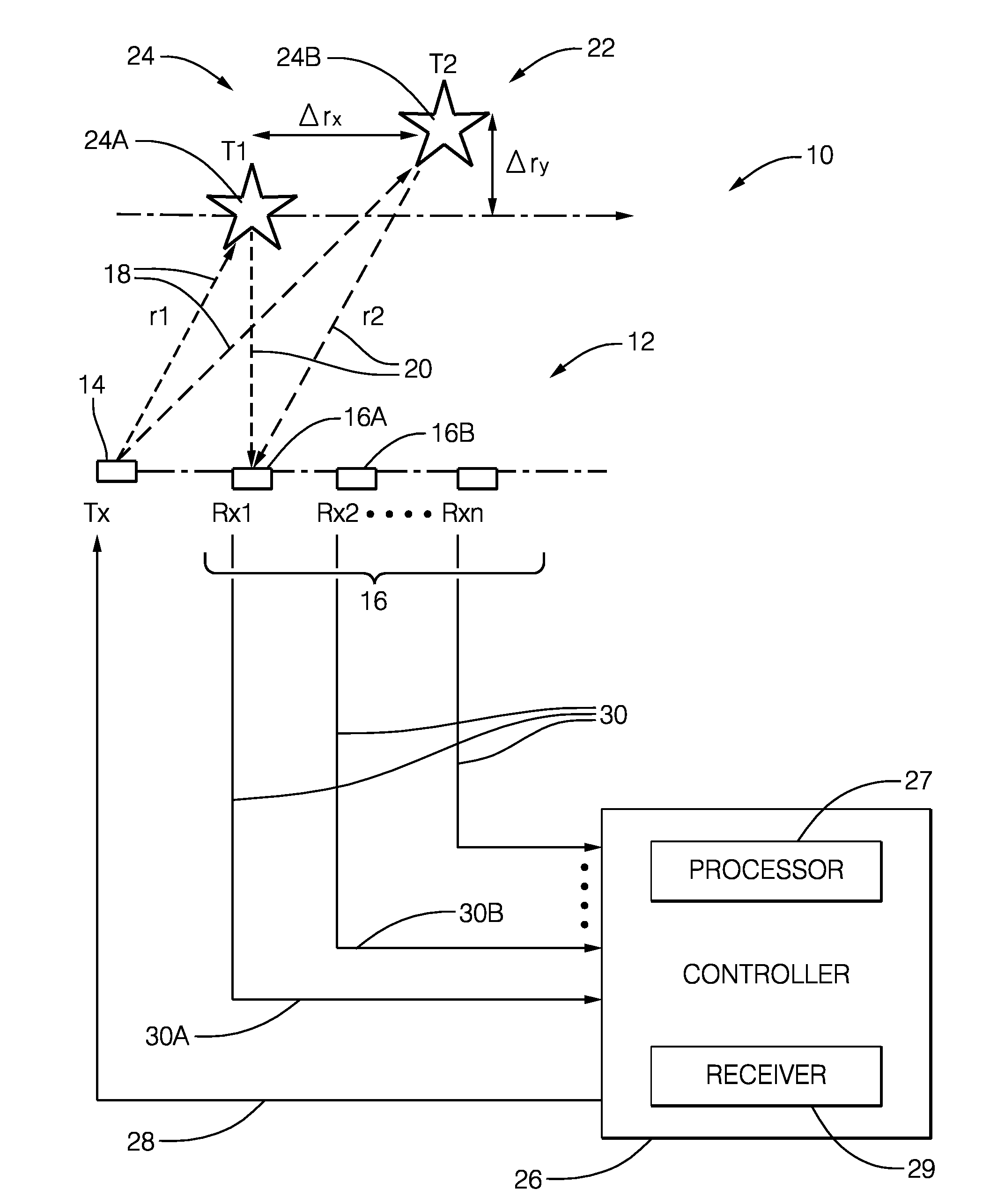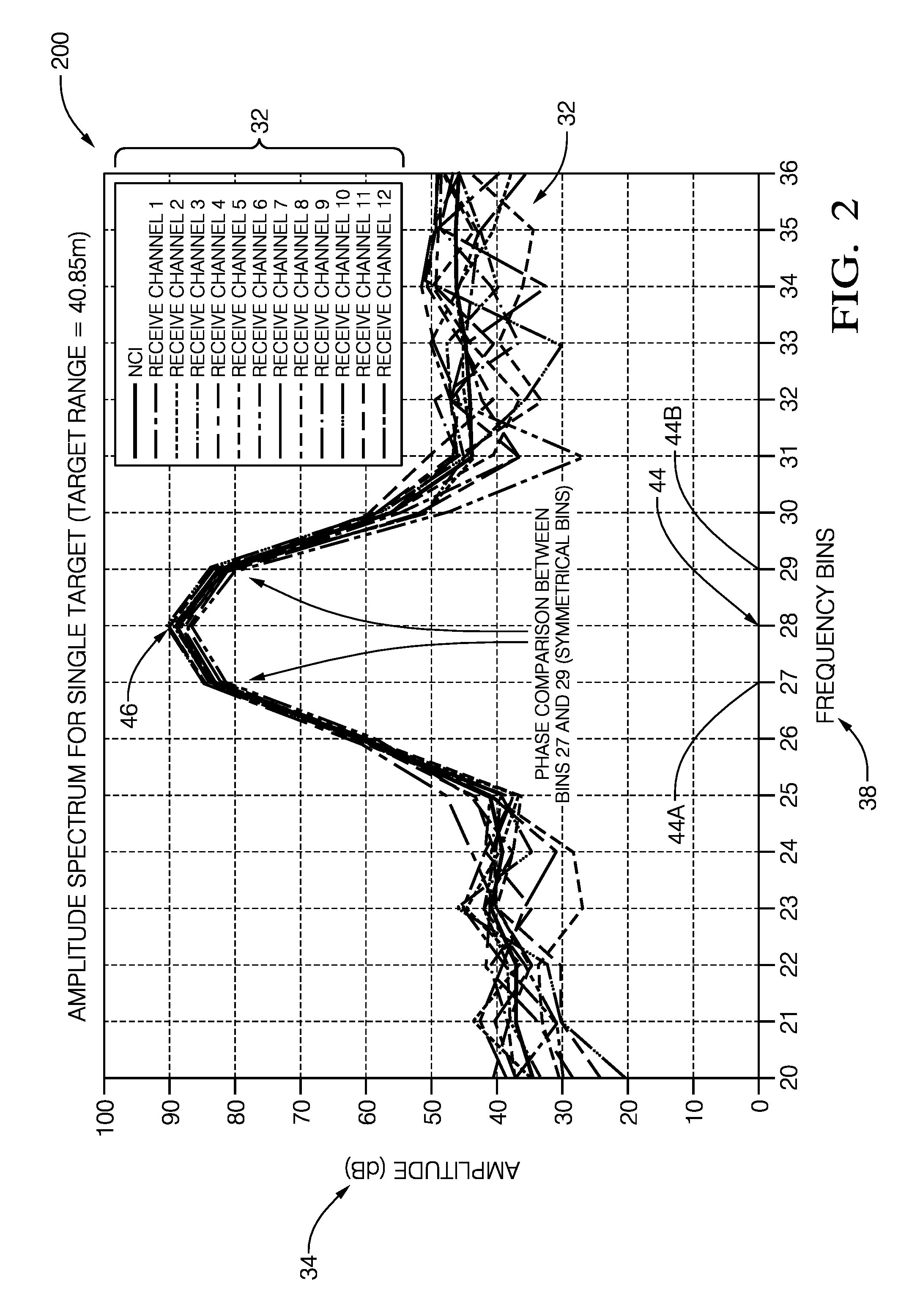Radar system for automated vehicle with phase change based target catagorization
a technology of automatic vehicles and radars, applied in the field of radar systems, can solve the problems of interference between reflected signals from each scattering center and reflected signals from other scattering centers at the receiver, and antenna-array elements could experience dissimilar interference characteristics of signals, so as to achieve the effect of being easily affected
- Summary
- Abstract
- Description
- Claims
- Application Information
AI Technical Summary
Benefits of technology
Problems solved by technology
Method used
Image
Examples
Embodiment Construction
[0023]FIG. 1 illustrates a non-limiting example of a radar system, hereafter referred to as the system 10. The system 10 includes an antenna array 12 that may include a transmit-element 14, and an array of receive elements, hereafter referred to as a plurality of antennas 16. It is recognized that one or more of the antenna elements that make up the antenna array 12 could be used to both transmit a radar signal 18, and output a detected signal 30 indicative of reflected radar signals 20 reflected by a first object 24A or a second object 24B in a field-of-view 22 of the system 10. The transmit-element 14 and the plurality of antennas 16 are illustrated as distinct elements in this example only to simplify the explanation of the system 10.
[0024]The system 10 may also include a controller 26 configured to output a transmit-signal 28 to the transmit-element 14, and configured to receive detected signals 30 from each antenna, for example a first signal 30A from a first antenna 16A and a ...
PUM
 Login to View More
Login to View More Abstract
Description
Claims
Application Information
 Login to View More
Login to View More - R&D
- Intellectual Property
- Life Sciences
- Materials
- Tech Scout
- Unparalleled Data Quality
- Higher Quality Content
- 60% Fewer Hallucinations
Browse by: Latest US Patents, China's latest patents, Technical Efficacy Thesaurus, Application Domain, Technology Topic, Popular Technical Reports.
© 2025 PatSnap. All rights reserved.Legal|Privacy policy|Modern Slavery Act Transparency Statement|Sitemap|About US| Contact US: help@patsnap.com



